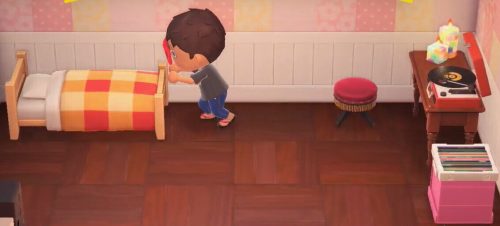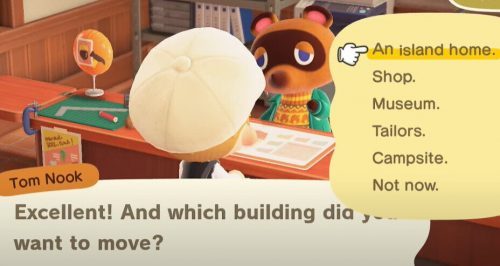How to Get a House in Animal Crossing: New Horizons
Your Animal Crossing house will be the center-point of a lot of your gaming activities. You use it to welcome visiting villagers, showcase your belongings, and even save your game. It’s also highly customizable, which makes it extra fun to make it your own. It’s easiest to start by visiting the Residents Services to see how you can acquire a home. This guide will give you all the steps on how to get a house in Animal Crossing.
How Much Does a House Cost in Animal Crossing: New Horizons?
Since you start the game in a lowly tent, getting a house is a big priority. Luckily it doesn’t take long. The cost is 98,000 Bells, which you can get via a loan from Tom Cook, provided you’ve paid off his previous loan of 5,000 Nook Miles. We’ll cover actually getting the loan next.
Getting a New House
Upon arrival on your new island, one of the first things you get to do is pick a spot for your tent, which automatically springs up. As you delve further into the game, you might decide that you don’t like the spot you chose. Fortunately, getting a new house lets you set it up on a different piece of land, if you wish.
Here are the steps to take of how to get a house in Animal Crossing:
- Pay back your initial debt with Tom. You need 5,000 Nook Miles, which you get from completing achievements on your phone. Examples: fishing, crafting, collecting fruits
- The next day in the game, Tom will give you the option to upgrade to a house through the 98,000 Bell loan. There is no interest in this game so you can pay him back over time without penalties
- Choose the color of your roof. Also, keep in mind your tent is where your house will be. If you hate it where it is you can move it later
- The next in-game day will reveal your new house. Now you can put items on the walls if you like
How to Get a Big House in Animal Crossing
Curious about how to get a big house in Animal Crossing? The secret is in the upgrades. Tom Nook will give you a new loan each time you want to upgrade your house, but you must pay off the previous loan first. That means before you can start upgrading, you need to pay the initial 98,000 Bells, so be aggressive with those Animal Crossing house payments!
From there, each upgrade costs a certain amount, increasing in price as you continue to make improvements. You’ll be collecting a lot of bells…Upgrades are worth it, though. You can make your house bigger, get more storage space, and even move your mailbox where you want it. The upgraded changes will appear the following in-game day. If you want to know how to build a house in Animal Crossing that will fit everything you need, take a look at the chart below.
The list of the upgrades in order:
| Ground Floor Expansion |
|
Costs 198,000 Bells |
| First Room Expansion |
|
Costs 348,000 Bells |
| Second Room Expansion |
|
Costs 548,000 Bells |
| Third Room Expansion |
|
Costs 758,000 Bells |
| Second Floor Expansion |
|
Costs 1,248,000 Bells |
| Basement Expansion |
|
Costs 2,498,000 Bells |
| Storage Expansion |
|
Costs 500,000 Bells |
| Storage Expansion |
|
Costs 700,000 Bells |
| Storage Expansion |
|
Costs 900,000 Bells |
| Storage Expansion |
|
Costs 1,200,000 Bells |
How to Relocate Your House
Now that learning how to get a house in Animal Crossing is covered, let’s talk about moving it. As you progress in the game, Tom Nook’s Resident’s Services building gets replaced with a much bigger one. This new building packs a punch with an ABD machine and other helpful services, such as relocating a building.
To unlock this Residents Services building, you need:
- A house
- The Nook’s Cranny Shop
- A bridge
- A museum
- Three new residents on the island
- Resident’s Services building
Once this is unlocked, you can move any of your buildings you want, not just your house. You’ll need to pay Tom a moving fee (30,000 Bells for your house) which you must pay right there. Then you’ll get a building kit in your inventory. When you decide where you want your building to be, set down the kit and it will be transferred there by the next day. Museums, stores, and other buildings have a higher moving fee, otherwise the process is the same.




